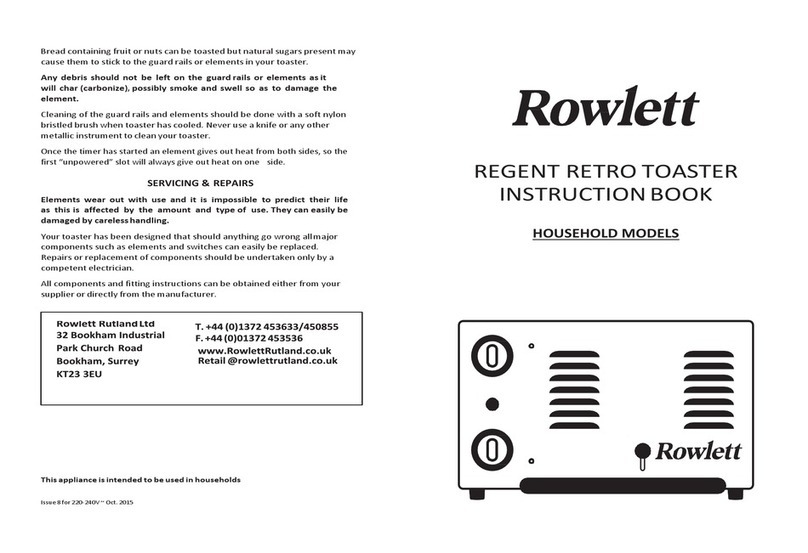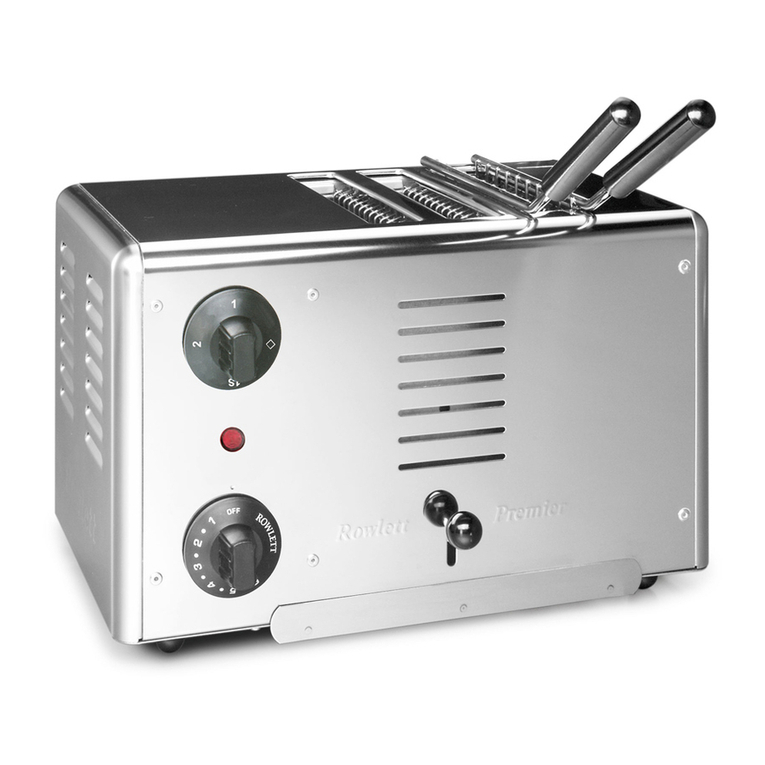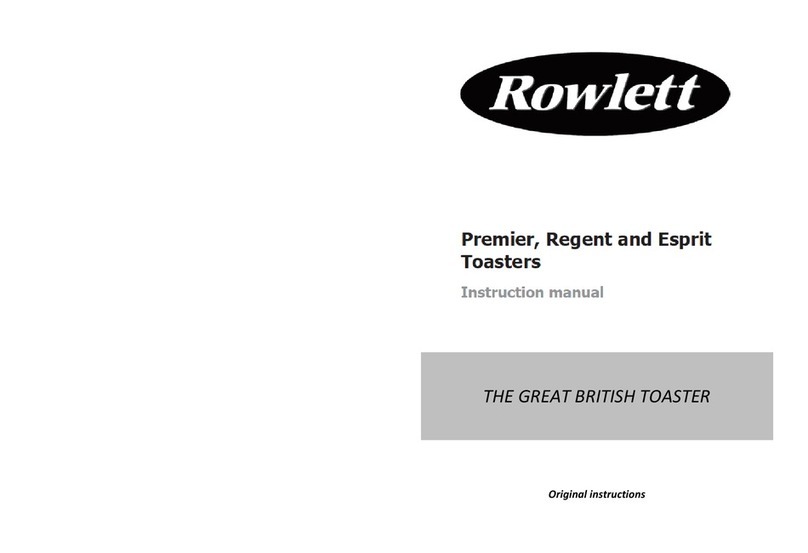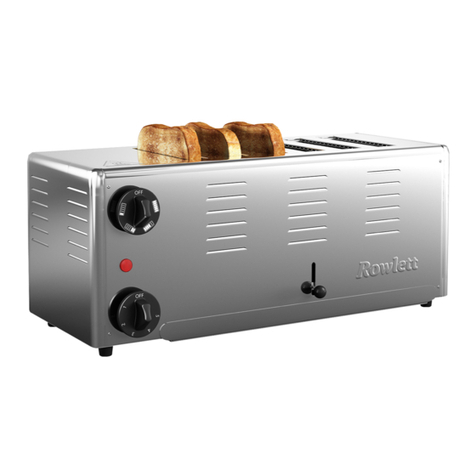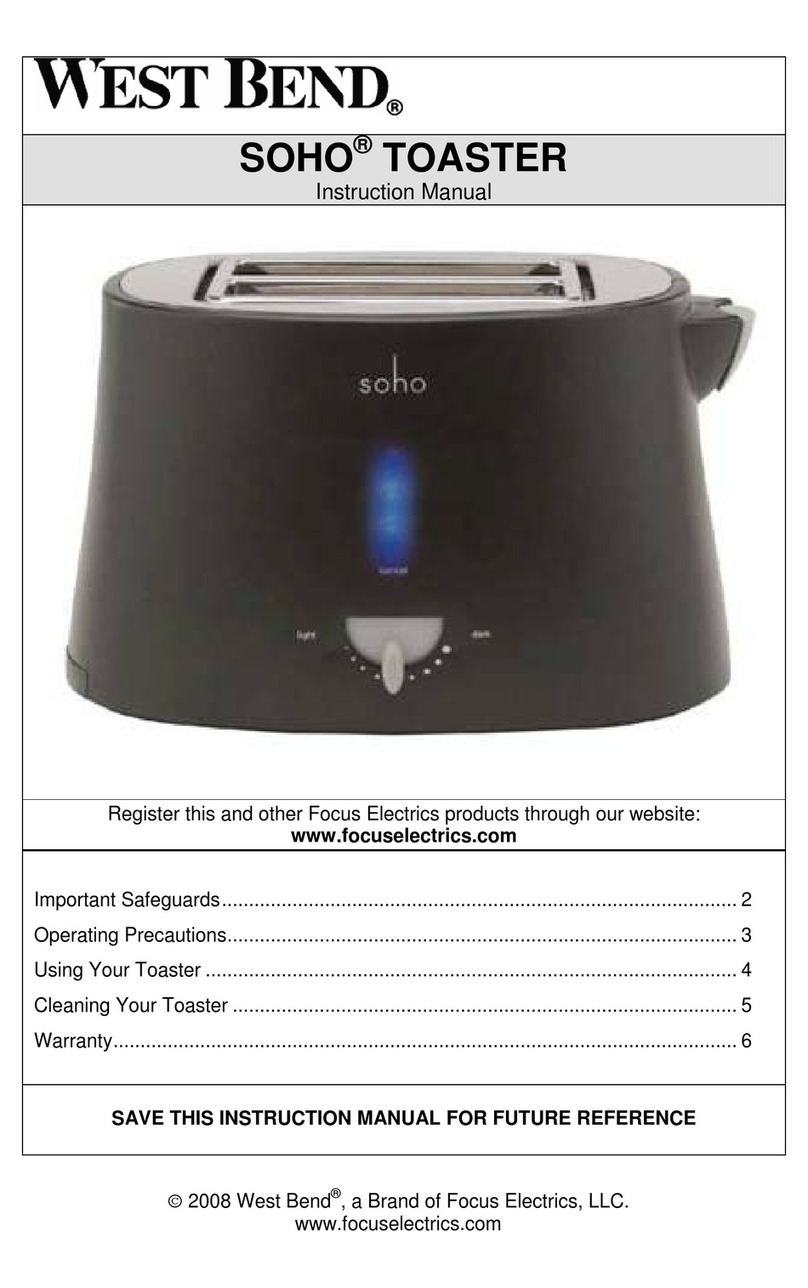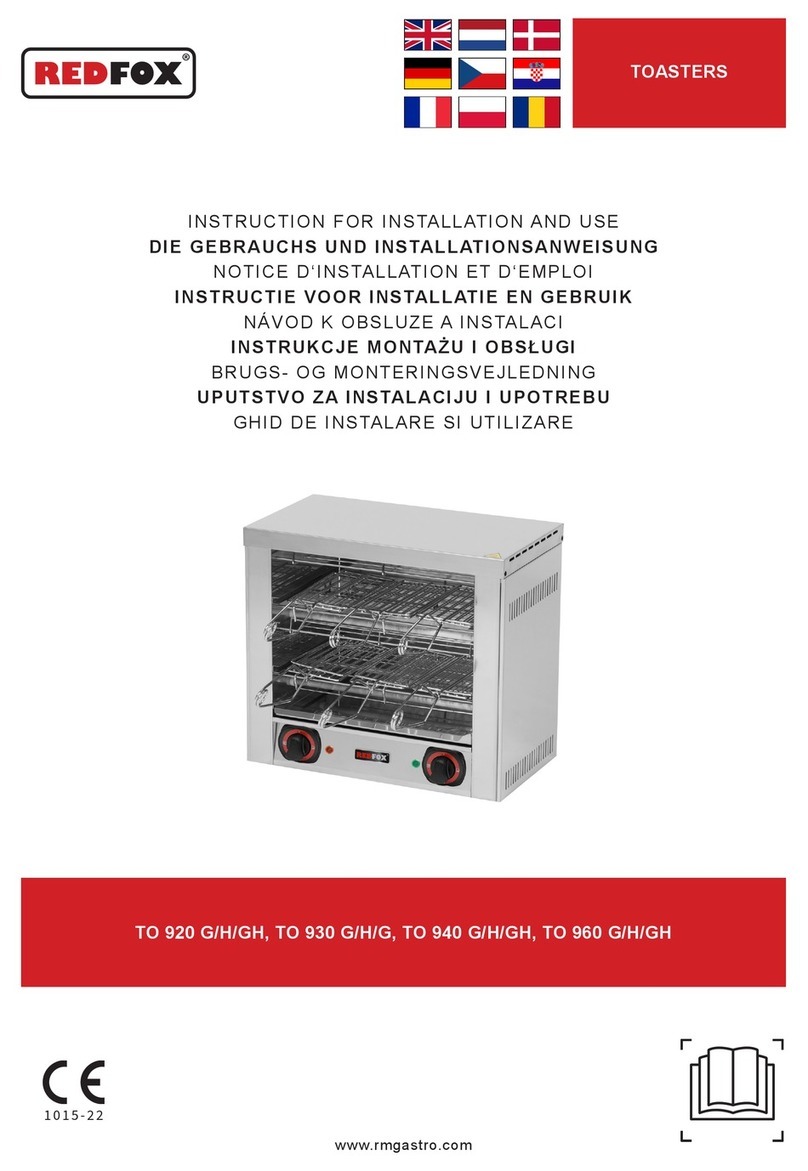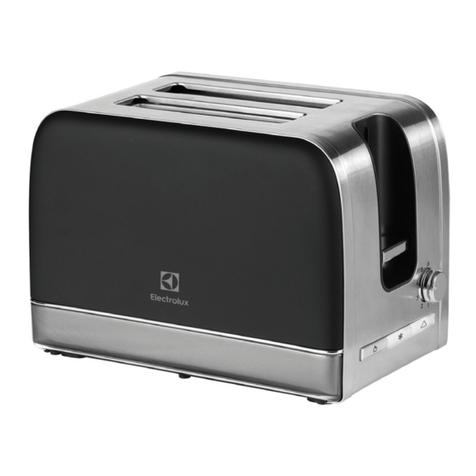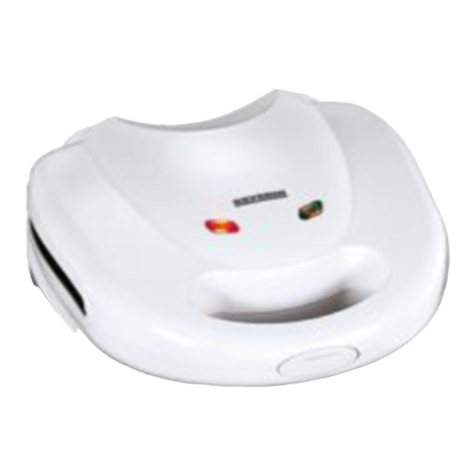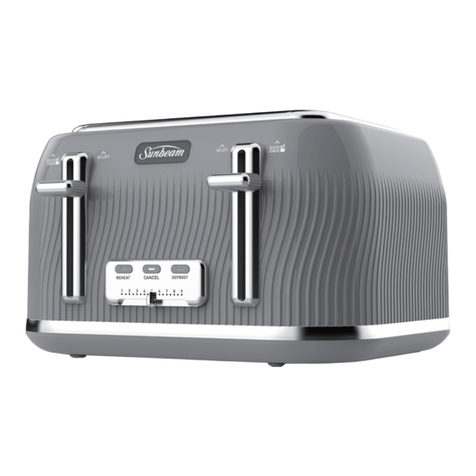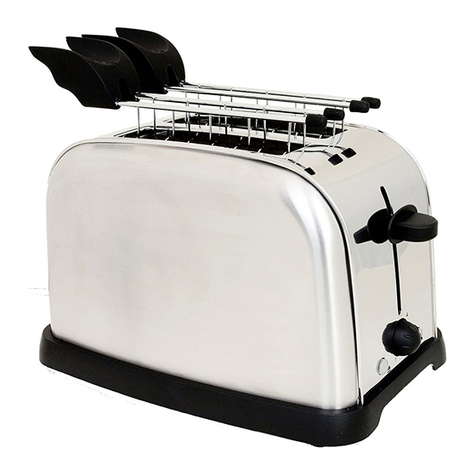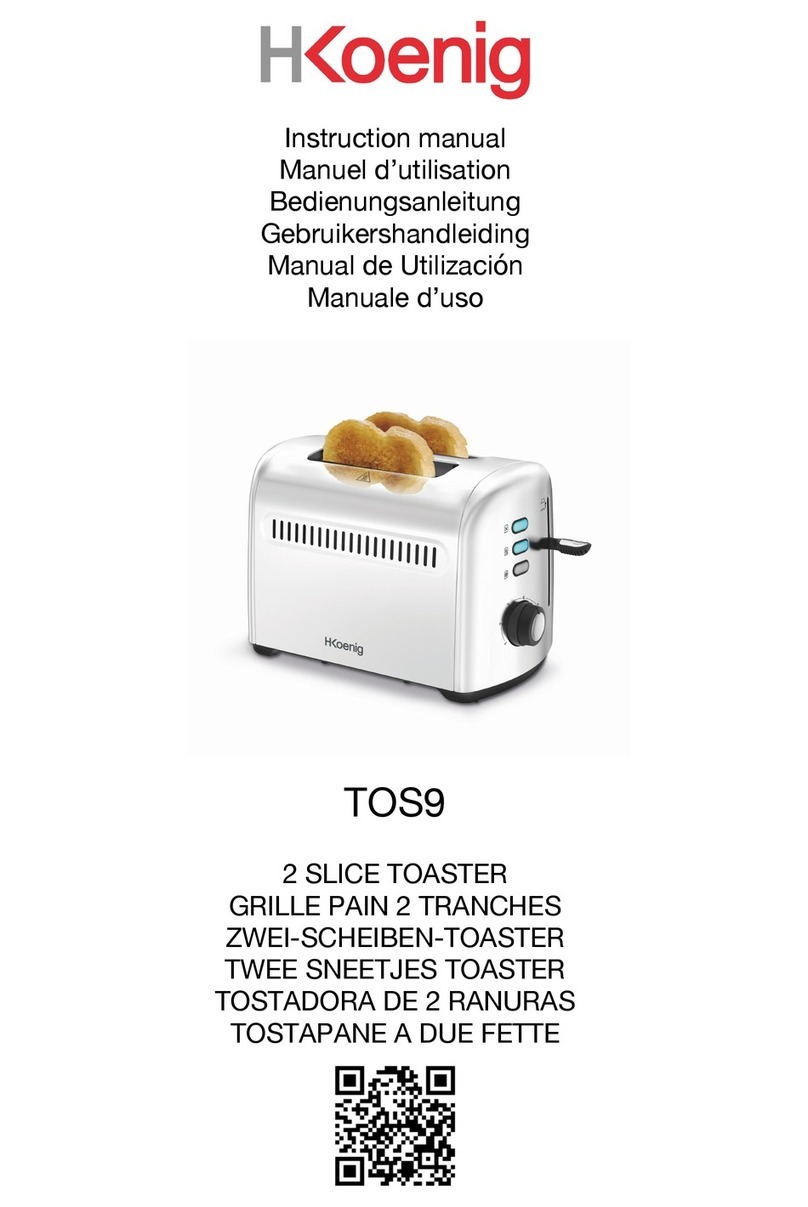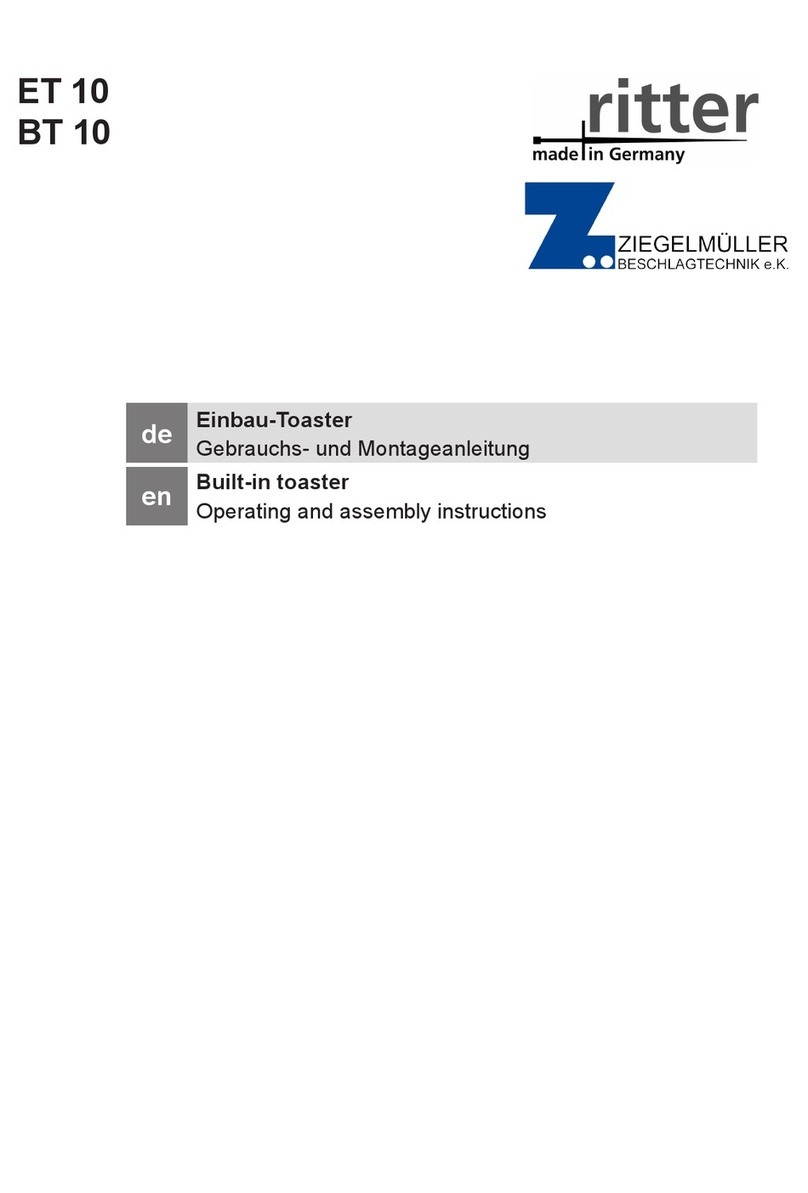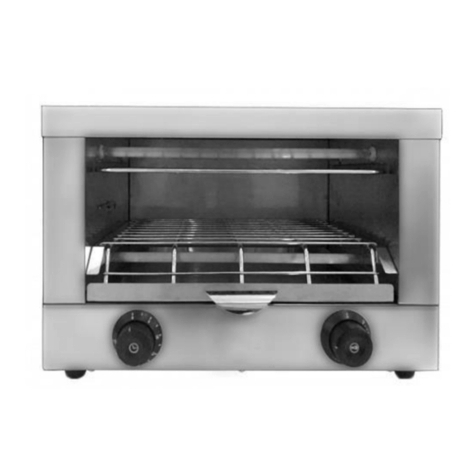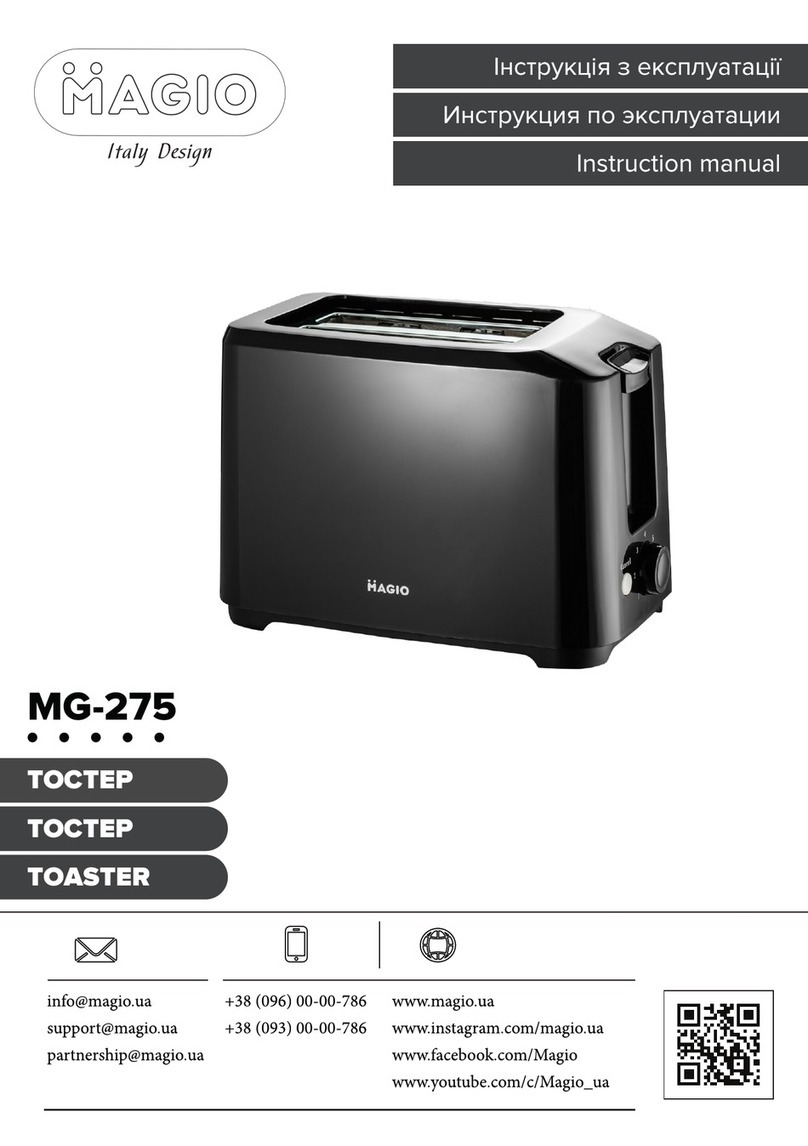
PRODUCT OVERVIEW
This appliance is an extremely powerful product that creates significant amounts of heat
whilst in use. (RT-1300 3kW, RT-1400 5kW, RT-1500 7kW) It is imperative and a must that
the environment it is being utilised in is properly ventilated and there is an air gap of at
least 4 to 6 inches (10 – 15CM) around the toaster to ensure that it is adequately cooled.
The toaster should be placed on a suitable surface so that the bread loading chute (A) is at
a comfortable height for loading.
A
A Loading point
B B
Rotary Switch On/Off, Full Power,
Upper Element / Lower Element
C Power Neon
D D Overheating Warning
E E Power Save Switch
F F Speed Control
G G Retrieval Point
ELECTRICAL SUPPLY OVERVIEW
The RT-1300 is the only appliance in this product family that will function with a normal
13AMP plug, supplied.
The RT-1400 and RT-1500 products are supplied with single phase supply (typical)
requiring 30AMP supply. 3 Phase configuration is available upon request. Installation of
these products should be carried out by a qualified electrician.
OPERATING INSTRUCTIONS
WARNING: BREAD MAY BURN. THEREFORE, TOASTERS MUST NOT BE USED NEAR OR
BELOW CURTAINS AND OR OTHER COMBUSTABLE MATERIALS. THEY MUST BE WATCHED.
DO NOT MOVE THE TOASTER WHILST IT IS IN OPERATION.
This appliance is designed for front operation, both loading bread (A) and collecting toast
(G), inclusive of front controls. The main control panel is located on the left hand side of
the appliance.
Ensure that the appliance is switched on at the mains supply, turn the main power rotary
switch (B) on and the power neon (C) will illuminate. Ensure that the upper and lower
element option is selected on the rotary switch (B).
Unlike slot toasters the roller toaster is designed to be left on at all times, thus requiring a
warm up period at start of or first use of day, to reach optimum operating temperature.
This process takes approximately 10 to 15 minutes.
The degree of toast browning is governed by the speed in which the conveyor travels, this
can be adjusted via the speed controller (F). Initially the speed should be set accordingly
as the heat builds up over the course of the first hour, with incremental increases
occurring to ensure suitable browning occurs. The darker you wish for the toasting to be
the slower the setting, the lighter you wish for the toasting to be the faster the setting. If
you want to toast very dry bread you may wish to reduce the power by utilising the power
save switch (E), this will reduce the power by 30%. This is a double pole rocker switch
allowing you to reduce the power in either the upper bank or lower bank respectively.
NOTE: At slow speeds it may be noticed that the conveyor moves in an intermittent way,
this is normal working condition and should not raise alarm that the product isn’t working
effectively.
SAFETY NOTE: This appliance should not be left on overnight and should preferably be
turned off at the point of supply in conjunction with the rotary switch (B). Allow a
minimum of 45 minutes for the machine to cool before commencing of any cleaning or
servicing.
COOLING FAN
All models incorporate a powerful cooling fan in the base of the control section to ensure
that the temperature around the controls does not exceed 75oC. If this temperature is
exceeded the overheating warning neon (D) will illuminate.
Excessive heat will damage the controls. Immediately turn the toaster off and allow it to
cool. If the problem persists on re-starting, consult your service engineer or supplier.
DAILY CARE AND MAINTENANCE
Please follow safety guidance prior to any cleaning or maintenance being carried out.
The appliance is made with a Satin (Brushed) finish stainless steel which is kept clean with
a damp cloth and proprietary multi-surface cleaner to remove grease. Never use a
scouring agent as this will damage the appliance. ALWAYS empty crumb and collection
trays on a daily basis. DO NOT use appliance without these trays in place.
